About this blog: Every culture enthusiast will inevitably visit Luang Prabang as a part of the great Southeast Asia backpacking trail. Apart from day trips to nearby Kuang Si waterfall, Luang Prabang offers an intense culturally immersive experience.
Also read, all travel blogs on Laos!
Luang Prabang is the favourite destination of the backpacking trail of Southeast Asia for a cultural traveler. This UNESCO world heritage ancient town showcases the best of French colonial past in picturesque bungalows, separated by gilded temples raising to the Sun since the past five centuries. Time slows down by this timeless city. Life seems content and peaceful at the Old Town peninsula of Luang Prabang.
Laos opened its door to tourism rather recently. In 90s to be more precise. everything before that was untouched, pristine and a culture well preserved under mystery.
For a few seasons, tourists swarm in Luang Prabang. Otherwise, the town remains shrouded in the mist of obscurity. Houses are tiny, two or maximum three-storeyed. Your vision will not be barred with eye-sore high rises, swank malls and profound advertisements boards. Respect for time bygone comes naturally as you explore the city by foot and encounter with the myriad cultural practices of Laos people. When you do, you know why people love to find respite from the bustle of the metropolitan city in Luang Prabang, even when the destination does not have any beach on offer in close vicinity.
It is worth every penny spent in Luang Prabang for the unprecedented peace it offers. Besides, the flow of old river Mekong tunes in a soulful melody as you explore the town in all her entirety, from UXO to the fisherman’s trick! I have listed down a few nuanced cultural and offbeat experiences in Luang Prabang! No matter you are on a short of a long itinerary, you ought to see all of these and more to touch the pulse of the Old Town of Luang Prabang
Early Morning Alms Giving Ceremony, Tak Bat: A Practice Dating back to Antiquity
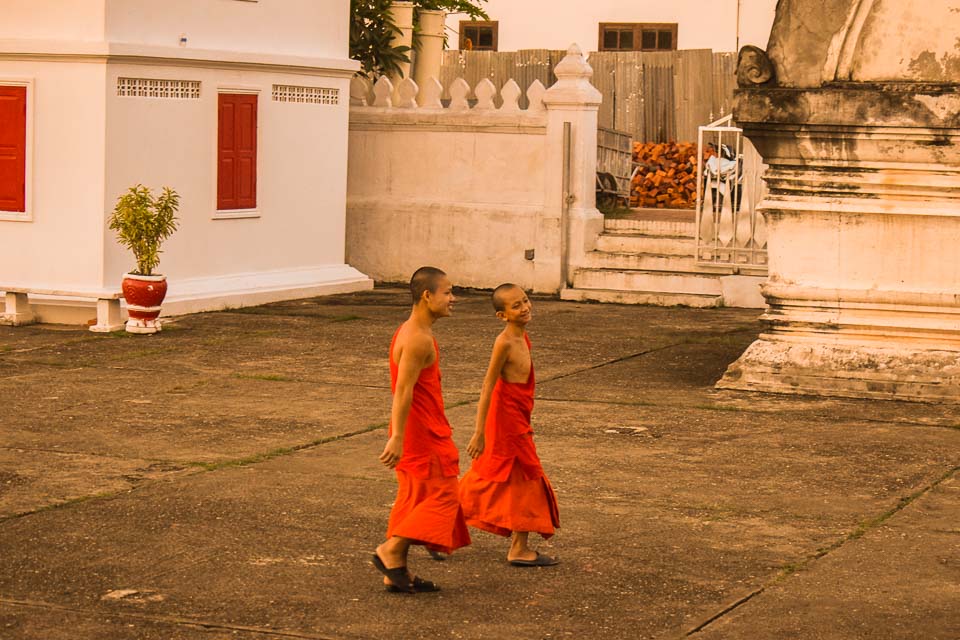
Every male child in Luang Prabang, Laos is a monk in his childhood. Well, almost every kid who is not otherwise privileged enough to go to school.
Let us address the elephant in the room. World economic reports and journals often refer to Laos as one of the poorest countries in the region. Having witnessed Laos hospitality and extremely rich heritage, I find it very disturbing to harp on that tune. Yes, the hill tribes of Laos were definitely cash poor but nature has showered them with abundance unasked for. A lot of this I had witnessed in Ladakh, the Himalayan plateau that looms large between China and India. Remember, China is a neighbour to Laos as well.
Less is more is the inherent philosophy of many a Eastern society. The deeply Buddhist Laos society is no exception. What money can not buy, goodwill and system can bring to you. Educating children is one part of it.
Schools and books as we know through western culture are yet to reach distance parts of the country. Buddhist monasteries on the other hand has been sharing these social responsibilities since eternity.
The morning alms giving ceremony in Luang Prabang is one of the ancient practices of Laos. Every Buddhist fable of Jataka has a reference to this practice. Monks roam around the residential town at the early part of the day, asking for alms. It is an honour to give alms to the monks. Usually sticky rice is given as a staple, along with other food items. Locals often inherit valuable golden pots from which alms are given. Bamboo made pots are used. The locals seat in the knelt down position as the monks collect alms. A beautiful Bengali (I think it has origin in Sanskrit) word is there to describe this practice, Mdhukari.
Alms giving ceremony takes place early morning at the crack of dawn. With time, it has garnered more than usual tourist attention. It is imperative to follow the rules and be respectful while taking part in the tak Bat ceremony, like maintaining pin drop silence, wearing modest cloth etc. This is a highly spiritual experience for the believers. Stay away if you think you are not ready to stand in the queue for a long time while locals engage with the monks. Be sure not to touch a monk even by mistake. I know it is tempting to take pictures of this intense cultural experience but kindly refrain from using Flash. This is now a staged performance.
When I was in Luang Prabang, there were two roads where this ceremony was taking place. The touristy one was close to Sisavangvong road, the place where Luang Prabang night market takes place.
Also read: Complete Travel Guide to Luang Prabang!
Explore the Town of Luang Prabang on Feet
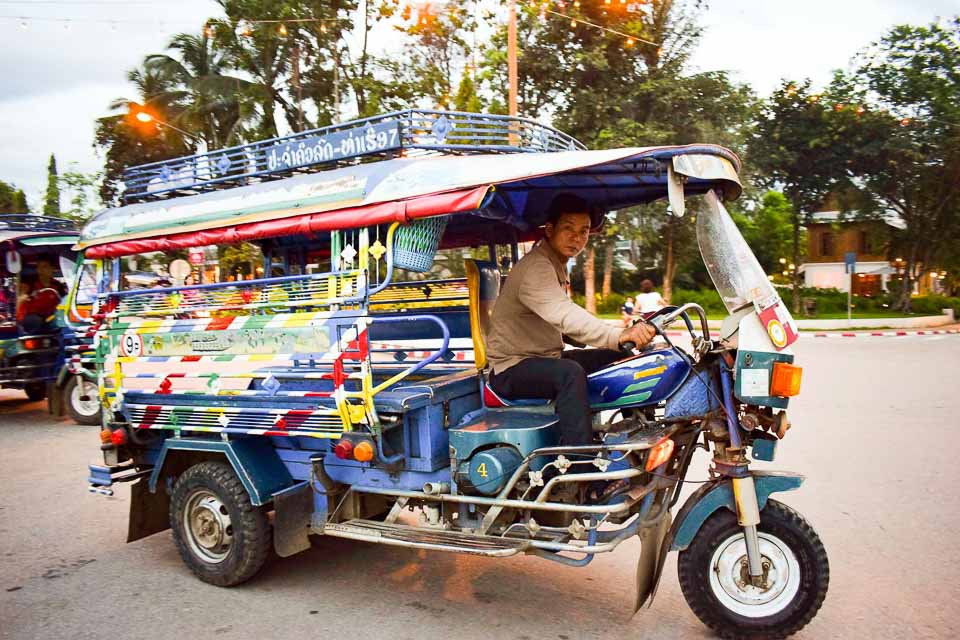
The town of Luang Prabang is the best place to wander aimlessly while soaking in the peaceful vibes. You will come across small two storeyed local houses flaunting the last remnants of French influence in architecture seamlessly blending with everything local and Laos. Small garden with tonnes of herbs is grown in the front of the Laos house. Use of bamboo is overwhelming, in the lamps, in the fence.
While exploring Luang Prabang, do not forget to look for those vintage cars. You will come across a few stunning old world cars. I even spotted one like Ambassador, the father of yellow taxis, the culture icon of Kolkata.
There are colorful tuktuks, vehicles open on four fronts and running on electric, awaiting you at every bend of the road. The Old Town of Luang Prabang is easy to navigate on foot. Do not forget to ask for a map with a pointer so that you do not miss out on the must visit temples of Luang Prabang, namely Wat Xiengthong, Aham, Vision. I came across a Wat (temple in Laos language) named Wat Manolam in one such aimless walk. A very young monk in yellow robe ran past the front door but made sure to briefly stop to bow down in front of the temple!
Take time to read the story depicted on temple walls of Luang Prabang. From local markets to water buffalo and elephants in log work: every aspect of local life in Laos is inscribed on the temple walls. To be honest, not much has changed in the past 500 years.
The temples of Luang Prabang stand distinct in blood orange and glittering gold pain. They are everywhere. Every bend you take, you come across a new temple. It is beautiful to observe how local life has assimilated in this spiritual way of life.
Temples of Luang Prabang are usually open from 8 in the morning till sundown. There are 33 old gilded Buddhist temples in and around Luang Prabang and numerous old shrines. Gnaw of time is pretty evident on them.
A few houses have a flying bird at the entrance, mostly made of wood or terracotta. Keeping birds in a cage is a thing in many parts of the world and Luang Prabang is no exception either. Every house has a frangipani tree in the courtyard. In the rains, the trees are in bloom. Its captivating aroma fills your heart to the brim as you take the walk across the streets to unfold many other mysteries steeped deep at the heart of Luang Prabang!
If the humid weather wears you off, sip on chilled Beer-lao, the iconic local brew and proceed again!
Also read: 3 days itinerary for Luang Prabang for the first time visitors!
Experience life by the banks of the Mighty Mekong by Luang Prabang!

Luang Prabang sits pretty at the merger of the Nam Khan river with the mighty Mekong. Mekong is the “Mother River” to locals. The annual flooding season of Mekong leaves a very fertile trail of alluvial soil, on which Laos’ agricultural economy thrives.
I have heard savvy travelers being decisive about leaving Luang Prabang lest they have to let go sitting by the river mekong. I am a bengali girl and I love my river. I understand their perceived sense of tragedy.
You truly do not need anything else in life when a river nurtures your soul daily. She wears off your laments, toils and tears. She lets life unfolds in myriad colorful ways surrounding you.
I know not to swim. Apart from that, I tried to do everything a human can do in a handful of days with a river. I sailed on her, watched golden hour turn flooring on her banks, sat in silence, watched people cross the river, keenly observing a fisherman at work. He caught different types of fish. I followed him home. Turns out, he catches fish for his cats. He had one “Lomcha” balck and ash mixed color cat and her children, a couple of them. A meatsafe and a few earthen wear by a Unun (earthen oven) complete his kitchen.
The Mekong river also hearts a makeshift bamboo bridge. You need to pay a meagre amount, 5000 kip to cross the cross. Every flood, the bridge tears down. Locals built it up again as the dry season approached. Monks come to the town of Luang Prabang by crossing the river through that iconic bamboo bridge.
Drink Laos Coffee All Your Heart Wants!
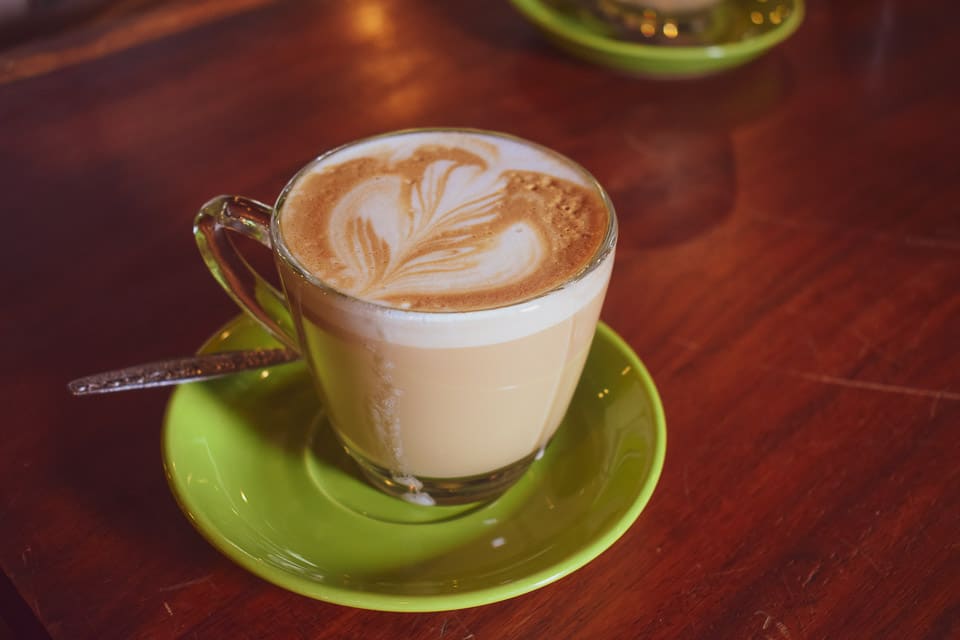
Not many know that Laos grows its own share of Coffee and exports it to the world too. For a coffee connoisseur Laos coffee is much acclaimed and often compared to its Vietnamese counterpart.
The French came to rule Laos and left their footprint in Indo-China in myriad ways Coffee is one example. The bolaven plateau coffee of Laos is a direct impact of French colonial rule.
Laos coffee is served with a thick layer of condensed milk at the bottom. It is sweet. The coffee beans are Arabica and Robusta. there is a chocolaty flavour to the Laos coffee which makes it distinct. There are countless coffee roasters in Luang Prabang dotting the banks of the Mekong river serving delectable Laos coffee. My favorite has to be Saffron cafe Luang Prabang. Do try their brownie cheesecake as well.
Weaving villages and craft in and around Luang Prabang!
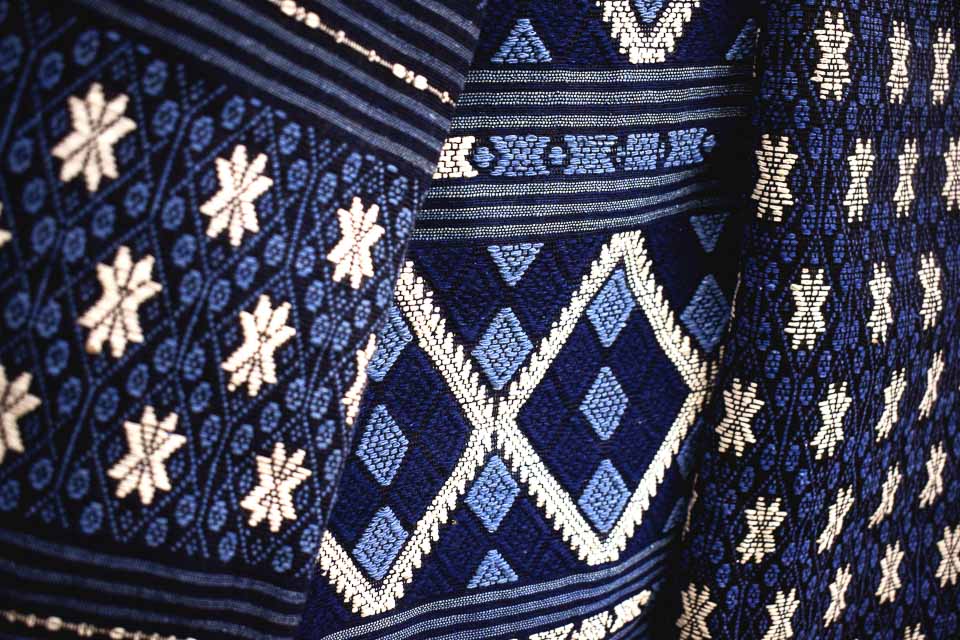
Luang Prabang is surrounded with towering limestone karsts. The hills are home to ancient hill tribes. Hmong is one of the eminent hill tribes.
Weaving fabric is one of the prominent things to do among the locals. The art of weaving among Laos people is praiseworthy. The Indigo dyed fabrics are impeccably prepared with months’ toil. Sinh (the long tubular skirt of Laos people) takes the longest time to weave. You can actually opt for smaller stoles and bags made of fabric as well. SOft Akha dolls made of fabric makes for great souvenir from Luang Prabang as well.
There are plenty of Laos villages close to Luang Prabang where you may visit to see the weaving process. Apart from experiencing hand-loom weaving first hand, you have a chance to take part in the workshop and buy your favourite fabric.
I visited Na Yan Tai village and Ban Lu, two tribal villages where weaving is the main source of income. Bal lu has a provision for hom-stay for visitors.
You can also visit a few other villages who excel in pottery and wood carving with Backstreet Academy for experiencing local life. Do include a visit to see saa paper making to this list of offbeat experiences in Luang Prabang.
Also read: Visiting Nong Khiaw, the best kept secret of Laos!
Learn about the Hmong Tribe’s legacy
Laos is a landlocked country. The north of the country is dotted with hills inhabited by the hill tribes. The south is a fertile plain land thanks to the Mekong river.
Among the hill tribes, there are many communities of Hmong tribesmen. They are originally native to southern China. Forever defying authoritarian regimes, Hmong had moved down south for more self-sufficient governance. You will find them in and around Thailand and Vietnam’s northern hilly regions as well as Laos.
Hmong people are nature’s children. Their distinct dress in black robe and elaborate silver jewelry are eye-catching. Their proverbial bravery and a fierce sense of independence have historically warded off many enemies off the border.
The Luang Prabang night market was originally an Hmong endeavor to showcase their beautiful collection of handmade art and crafts. Albeit, it has been diluted as time flew.
The Unjust war on Laos: Lest we forget

Not many of us know but Laos suffered the heaviest bout of bombing during the Vietnam war. The horror of the war looms large at the mountainous regions of Northern Laos. The communist party of laos, Pathet Laos, often ran their governance from cave hideouts tucked away on the mountains. You will come across a few such caves now studded with tombs and memorials dedicated to the deceased of the war.
However, the real tragedy of the war remains in the unexploded ordnance (UXO) that litter on the uncharted trails of Laos. Many lives have been lost in the war. More continue to die from the landmines and other cluster bombs.
A few NGOs of the west have taken a lead and come together to create meaningful artefacts from such bombs. Experts train to defuse such bombs and use spoons and other souvenirs from the scrap metals. You may come across a few locals selling spoons supposedly made of bombs at the night market of Luang Prabang as well. Be choosy not to shop from random vendors. Many times children are employed to collect such scrap metals which are killers.
Be mindful and listen to the locals’ version of the war and its horror. There is a reason why this small country has struggled so far economically. Long standing political exploits played their part. Visit the war memorials, read the books on Luang Prabang, Laos and educate yourself to prepare for interacting with the locals.
Also read: Visit to the War Memorial of Saigon!
Baci Ceremony: Offbeat Experiences of Luang Prabang!

The most intense local experience I had in Luang Prabang was taking part in a Baci ceremony.
For a long part of history, Laos did not document their political agreement. Oral traditions were strong and honoured. Baci is a tribute to that long lasting celebration.
By taking part in the Baci ceremony and flaunting those cotton threads on my wrist, I felt to be one with the community. It is an honor, a heartfelt gesture that can not be put to words easily. I felt like all my faith in humanity and human connection were restored by this one small celebration.
We visited a tribal village, sat in a room surrounding a bamboo set up heaped with cotton strings and food offerings and flowers and leaves. The man chanted Mantras and showered us with holy water. The ceremony lasted for 30 minutes and we were served local food of sticky rice, fruits, eggs, chicken and other local produce of the village farm land
Also read: Three best neighborhoods in Luang Prabang for the first time visitors.
Morning & Night Markets of Luang Prabang
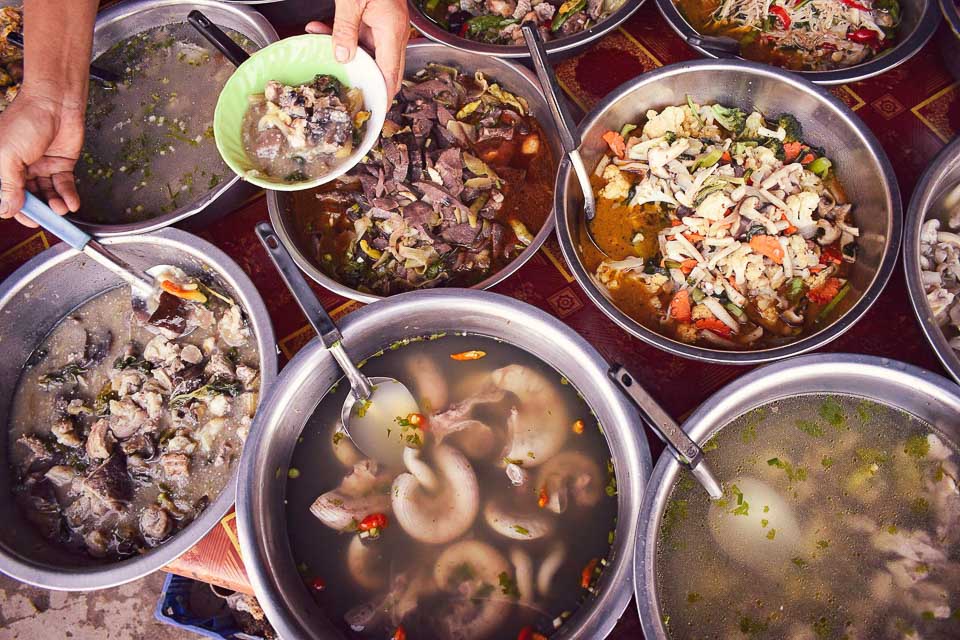
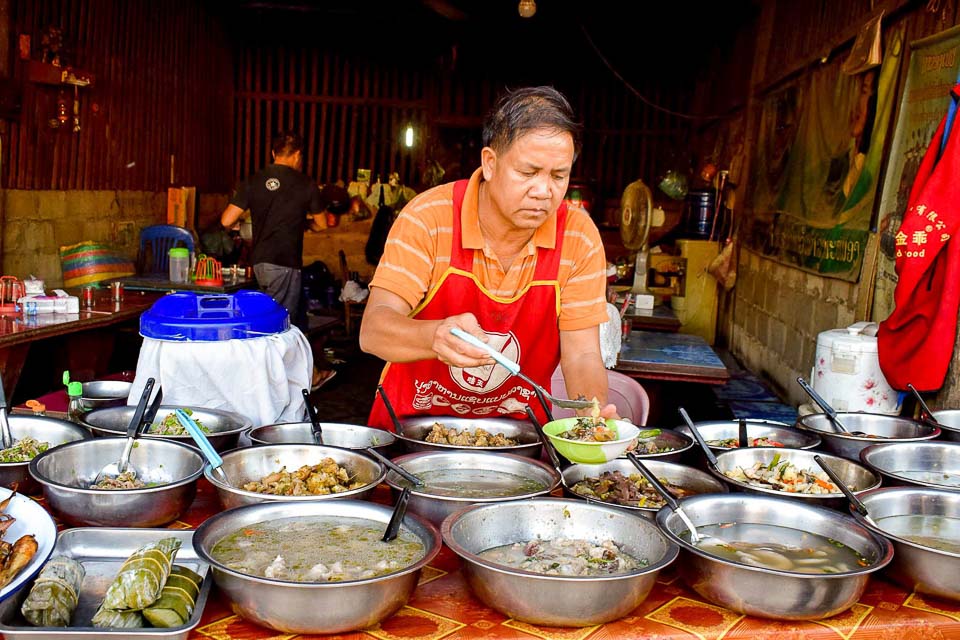
Like the rest of Southeast Asia, local markets of Luang Prabang are the nerve center of cultural exchanges. There are plenty of local markets with the night market of Luang Prabang taking the lion’s share of the fame. The night market is a great place to buy gift items, souvenirs and spot arguably controversial items like animal skins and horns and what not. The night market starts from 5 pm and goes on till 11 or so. Luang Prabang town sleeps early.
However, for great local Laos food and see the fresh produce of the day, visit the morning market of Luang Prabang. Vendors start to set the market up from as early as the crack of the dawn. By 7 am the morning market is bustling with vibes.
From ducks, country, chicken, to water buffalo, various parts of pork, fresh fish of river Mekong, seasonally available river prawns, frogs, honeycombs etc are available at the morning market of Luang Prabang. That is the wet market side.
You can take a tour across the street and visit the vegetable market where jungle fruits are collected and sold in heaps. The morning market is a great place to savor a cup of coffee and feast of a typical Laos breakfast of congee and dried fish.
Also read: 20 books to read about Laos before you visit!
Buffalo dairy of Luang Prabang, Laos

I took some time out to visit the Laos buffalo dairy on my way to the Kuang Si waterfall. It is one of a kind diary of the country located close to Luang Prabang. The Laos buffalo dairy has helped Laos become self sustainable in terms of dairy sufficiency.
True to the cultural identity of the entire Indo-China, Laos people shied away from drinking milk. But if you are bringing coffee to the country, you are likely to demand milk to brew it in. Needless to say tourists would love to have a share of cheese at the breakfast buffet!
For me, coming from a culture where cow milk is a staple and almost Godly, it is unfathomable to understand why milk is not a part of Laos diet. Almost every household in Luang Prabang had a space for water buffalo. I learnt about Lactose intolerance of the local people later.
Laos Buffalo dairy came into existence to meet the increasing demand of dairy products of the hospitality industry in Luang Prabang and other tourist areas of Laos. They have imported a Murrah buffalo of Indian origin for stronger offspring. They rent the buffaloes of local farmers, breed them and use the milk and send them back to the families with the calf. It is a sustainable venture.
From the milk produced, Laos buffalo dairy produce an array of products, including cheese and ice cream! I tasted them and found them to be delectable!
The bamboo bridge of Luang Prabang: Eco Friendly Local Lifestyle!
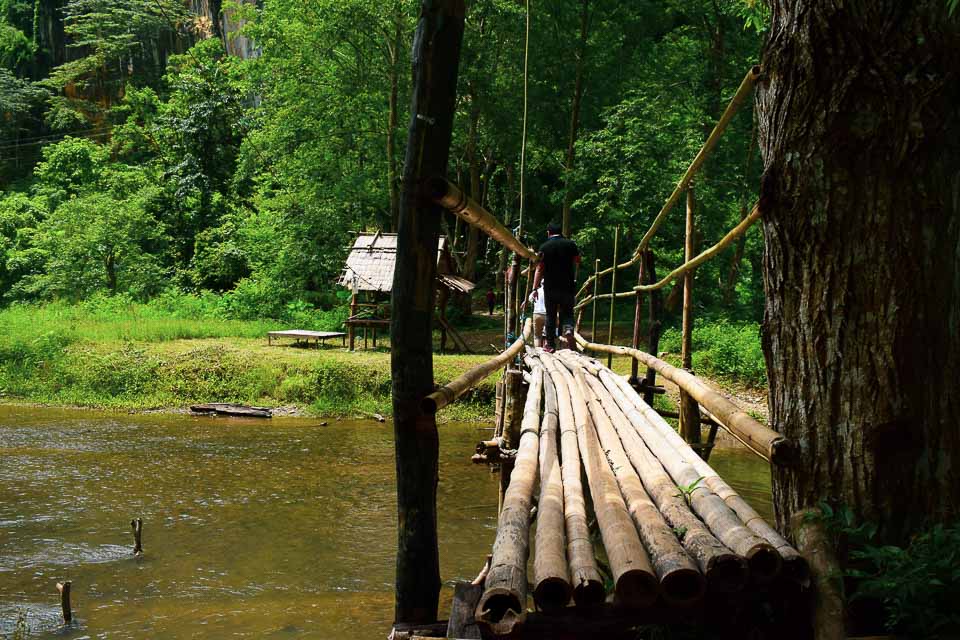
From sustainable bamboo straw to bamboo built houses, Luang Prabang is a pioneer in environment friendly tourist products. Sustainability is deeply ingrained in the tribal lifestyle and it sure can teach a thing or two to the urban travelers.
Bamboo is grown in abundance in the dence green woods surrounding Luang Prabang. Locals have historically used bamboo products in their home. Bamboo bridge to bamboo baskets are essential for a regular life in Luang Prabang, Laos.
It is quite a learning for us to know how much bamboo means for the locals of Luang Prabang. The elrdely of the community are usually engaged in weaving bamboo made stuff. They share the focal point of the spiritual Baci ceremony as well and revered as much as Bengalis revere brass items.
Since Laos is a landlocked small country, using plastic turned out to be an uncontrollable vice. Many pits are dug to manage waste created by locals as well as travelers but the Laos government still finds it hard to control the damage. Reasonably so.
Instead choose to use Bamboo products and even better if you buy a few as gift items while traveling in Luang Prabang. They are long lasting, sturdy, hued in subtle color and can even be customized if you order early enough.
Also read: Obtain a Visa on Arrival in Laos or an e-visa!
Learn the nuances of Laos Cuisine at a Laos cooking class

Indeed the best way to assimilate to a new culture is to taste your way through it. I highly recommend taking a traditional Laos cooking class and explore the authentic spices and herbs used in a Laos kitchen on a daily basis to unfurl many nuances of the Laos cuisine. For Example, Laos people do not use green chilies. Instead they harp on the bark of a tree called “spicewood”. It is very hot with a hint of smoke as you taste it. The flattened mushrooms Laos eat is also known as ear mushrooms among the locals.
Coconut flakes are used in abundance. The most glorious ingredient of Laos cuisine is the use of river fish. My Bengali heart could never get enough of the sweet water fishes they sell at the street side stalls of Luang Prabang. They simply grill it on charcoal and serve the fish with a fiery hot sauce. Sticky rice, like the rest of Southeast Asia, is a staple in Laos too! Check with Manda Laos, one of the best cafes of Luang Prabang for a cooking class. You may also sign up with the Backstreet academy and choose to go for a bespoke Hmong cooking class in Luang Prabang, a more offbeat experience.
These are just a handful of cultural and alternate experiences in Luang Prabang that left a lasting impression in my mind. Needless to say, there are more! Think visiting book exchange cafes where you can donate the book you have read and the book you want to read. You may get engaged in a conversation with a wise monk, teach him English in the process and invaluable life lessons in return. L’estranger is one of the many book cafes who held a daily film screening for free for the visitors. A traditional puppet theater and screening of Laos Mahabharata takes place at the heart of Luang Prabang every evening. Children indulge in the game of Petanque (Boules). A sprawling botanical garden of Luang Prabang awaits you on the other side of the river. Tad See waterfall plays a hidden play field for the young monks of Luang Prabang while tourists mostly flock to Kuang Si.
This post may contain affiliate links. Please read the disclosure post. If you have liked the article, you may support it by buying using these links without any extra cost to you.
Let’s stay connected on Facebook, Instagram, Twitter! You may also consider joining my mailing list. I send travel and photography related emails only once a month!
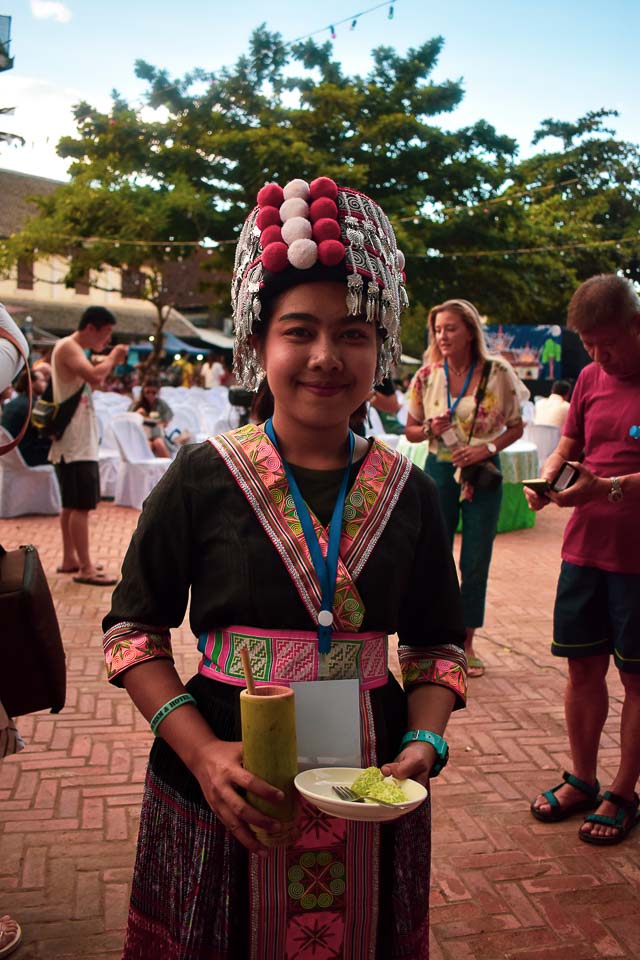

One Response